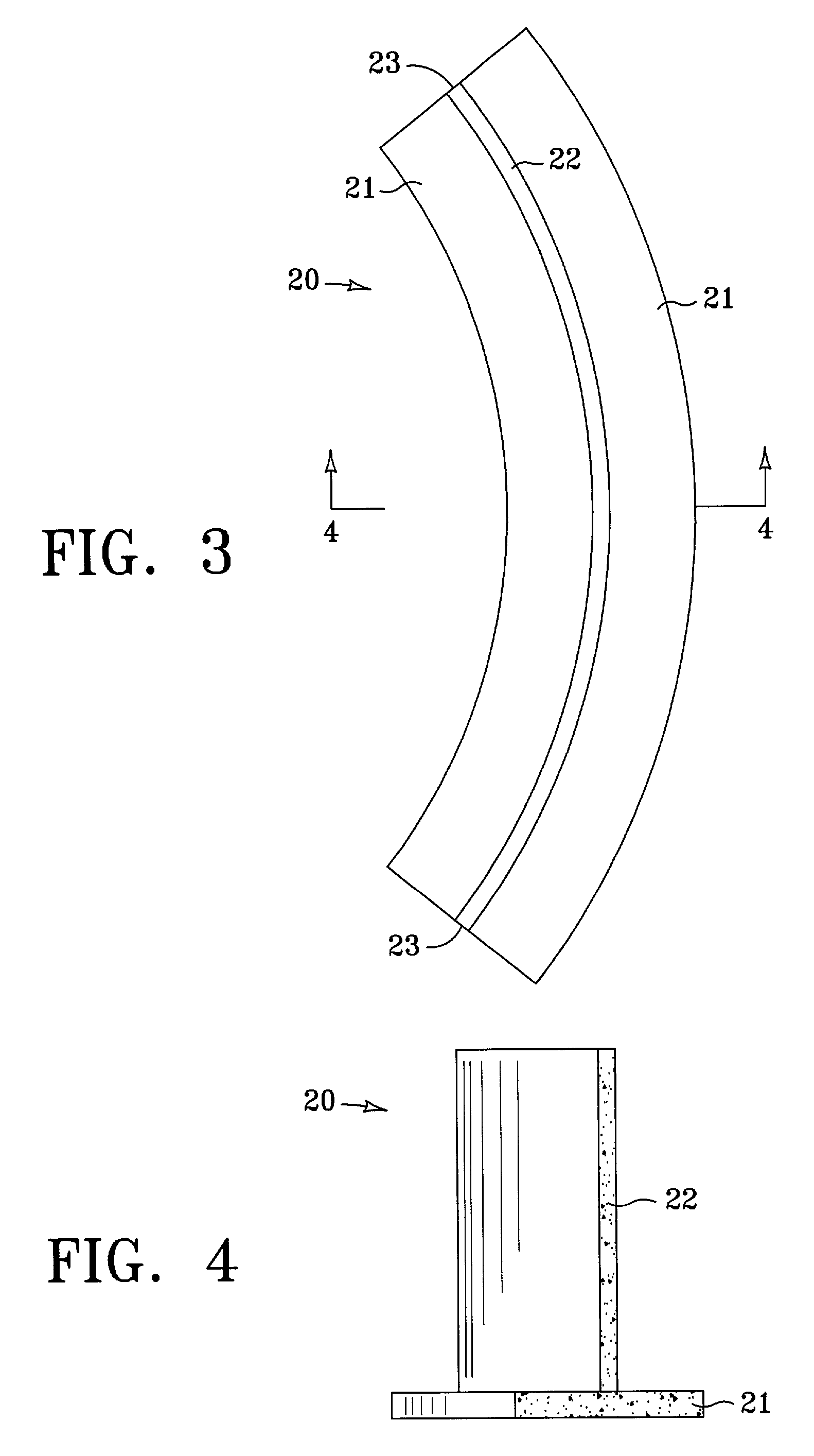However, relatively tall open-form and combination-form structures are not addressed by slip-forming or jump-forming, and are not economical with conventional forming methods except as they are done in a “relatively short” format.
This means that these types of relatively tall, open-form structures are not currently produced in a systematic or
machine-like fashion, as are relatively tall closed-form structures.
Specifically: (1) Vertical segmental construction is not addressed by jump-form or slip-form methods of construction; (2) although segmental construction is addressed by conventional means, only relatively short structures can be economically effected by conventional means (i.e., conventional forming methods of construction are not economically adaptable for construction of tall, closed-form or open-form structures); (3) although accurate geometric measurement is possible with all methods of construction given modern surveying equipment, accurate
geometric control is not inherently achievable for relatively tall and / or large
footprint structures constructed with the current jump-form or slip-form methods of construction; (4) modern jump-forming and slip-forming techniques are very labor intensive; (5) none of the three concrete forming methods described above (jump-forming, slip-forming, and conventional forming) are readily adaptable to both discrete and continuous forming; (6) the methods by which jump-forms, slip-forms, and conventional forms are borne by the evolving structure is cumbersome to productivity; (7) in all three forming methods there are significant limitations on geometries due to the method of resolution of the hydrostatic force of the concrete between the inside and outside forms; and (8) jump-forming inherently does not allow for a work
deck on the outer ring of forms.
The reason why conventional forms are not readily adaptable for construction of tall, open-form structures is inherent in the method: the process of loosening the forms from the wall-ties or through-bolts, lifting the forms vertically to the next level, and attaching the wall-ties or installing the through-bolts is a very cumbersome, labor intensive operation.
None of the prior art methods of constructing concrete structures address both discrete and continuous
modes of operation in the vertical or near vertical direction.
Jump-forms are not designed, nor are they readily adaptable for, slip (continuous) forming.
Slip-forms are not designed, nor are they readily adaptable for, discrete forming.
Although discrete forming with slip-forms may be an inadvertent result of stopping the slip form operation and letting the concrete set-up, it is not an intended function, nor is it a simple matter to get a slip-form moving again when the concrete sticks solidly to the forms.
They cannot be readily transitioned for use in a bi-model fashion.
Slip forms, though relatively failsafe in the sense that the support pipes are continuously buried in the wall, are inherently cumbersome for placing
rebar and concrete because the
pipe and yoke
system repeats itself so frequently around the perimeter.
Because of this, structures with dense
rebar and / or large perimeters are impractical with slip-forming.
This “tie-through” method of resolving the hydrostatic forces from the concrete and attaching the forms to the concrete is cumbersome to upward progression because of the labor-intensive process of removing and re-inserting bolts or ties.
There are a number of shortcomings with the prior-art chord-form method: (1) As with the classical jump-form method which relies on the hoop tensile capacity of the forms to resolve the hydrostatic forces from the concrete, there is a practical limitation on both the geometry and
maximum diameter which can be achieved.
A 60′
radius curve is the practical limit for using these types of forms; (2) As with jump-forming, the chord-form method requires two or more levels of forms, and it requires that these forms be “jumped”, a very labor intensive process; (3) The chord-form method requires heavy
buttress trusses at both ends for the full height of the segment being constructed.
The capital and mobilization costs associated with these trusses are very high and set-up times are long, especially for very tall segments; (4)
Vertical alignment of the segment can only be achieved when each new
buttress truss is installed, and only to the degree to which the truss can be tilted out of plumb to correct the alignment.
 Login to view more
Login to view more 


